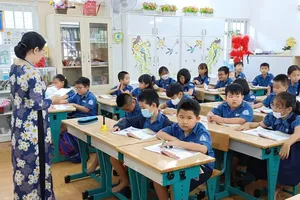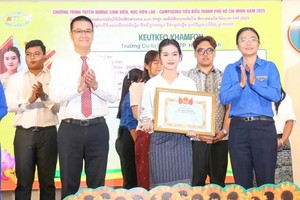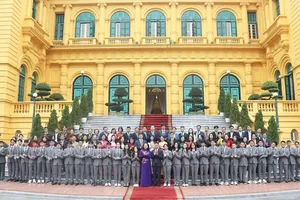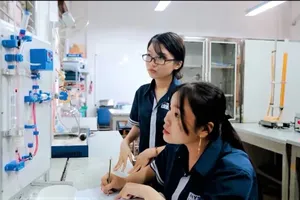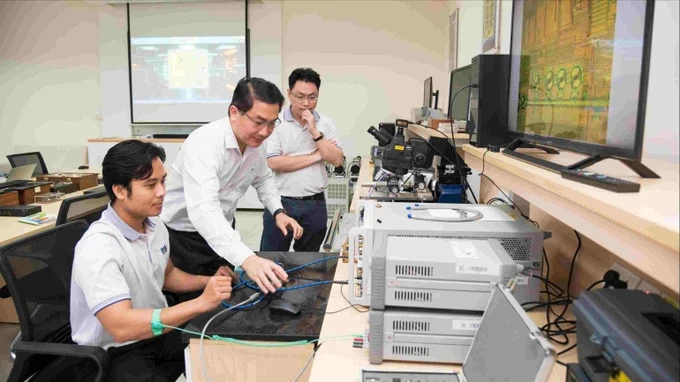
The Education and Training Ministry reported that after 10 years carrying out Resolution 29, the quality and quantity of higher education enjoyed a great increase. In the Global Innovation Index (GII) by the World Intellectual Property Organization, Vietnam’s rankings on Tertiary Education and Research & Development in 2013 were at the 111th and 123th positions among 142 considered nations at the 5th one in Southeast Asia (after Singapore, Malaysia, Thailand, the Philippines, and Indonesia). Ten years later, these rankings rose to the 89th and 44th positions in the world and the 4th in Southeast Asia.
However, the rising scale is only in certain disciplines in finance-economy and the highly demanded fields. Those in the basic science and social science cannot attract much interest of learners.
Moreover, most universities merely focus on under-graduate-level training, not on post-graduate ones or scientific research activities. There is a serious lack of leading scientists that are able to follow new research directions or take charge of national missions. The passion and devotion of a certain number of scientists are not high enough.
Statistics reveal that master-level and doctorate level training only accounts for 5 percent and 0.6 percent in teaching activities of universities in Vietnam respectively, much lower than the ones of neighboring countries. The corresponding figures for STEM (Science – Technology – Engineering – Mathematics) disciplines are 2 percent and 0.3 percent. This means an extremely low ability to research, create breakthroughs, and master technologies.
Dr. Nguyen Thi Mai Hoa, Chairwoman of the NA’s Culture and Education Committee, said that human resources development is considered one of the strategic breakthrough solutions for the industrialization and modernization of Vietnam. This will also contribute to the process of fundamental and comprehensive transformation of the economy and social life based on science - technology, innovation so that Vietnam can possess an independent and active economy for globalization.
Assoc. Prof. Dr. Nguyen Minh Tam, Vice President of Vietnam National University-HCM, shared that university autonomy is an inevitable trend at present for more breakthroughs in tertiary education. However, the national budget allocation to education is still rather low for these breakthroughs to really happen, especially in high-quality or hi-tech human resources training. From a macro perspective, it is advisable to increase investment in training and research in key fields in order to promote innovation, startup activities, and scientific research.
Deputy Minister of Education and Training Hoang Minh Son commented that the natural science, life science, and statistics-mathematics (SM) disciplines are the foundation for science-technology and socio-economic growths in each nation. Sadly, university admission reports in 2022 showed that the proportion of SM first-year students only comprises 1.5 percent of the total, much lower than the data of other Asian-Pacific countries (at 7 percent).
Therefore, in the project to develop high-quality human resources for high technologies, there will be proposals and solutions for both learners and educational institutes to boost the growth of SM and other key technical groups. The two ministries of Education-Training and Science-Technology are going to cooperate to promote a closer connection between teaching and research conducting among universities. Related ministries are asked to adopt measures to prepare human resource forecast reports or to welcome human resource training orders.
Assoc. Prof. Dr. Ngo Van Ha from Da Nang City Economy University (under Da Nang University) shared that the number of newcoming students depends on the capacity of each university (teaching staff and educational facilities), not on current or long-term demands of the labor market. Hence, it is of extreme importance to prepare labor need forecast and analysis to help these institutes to develop their own training strategies.
To obtain a precise forecast, there must be close collaboration between management units, policy making agencies, forecasting units, educational institutes, and businesses. In other words, a special agency for human resources evaluation and forecast should be formed to adjust the quantity of labors in the country and avoid unwanted waste.
The Education and Training Ministry states three strategic breakthroughs in the Resolution of the 13th Party Congress
- Completing a consistent institution;
- Developing human resources, especially the high-quality one;
- Forming necessary educational facilities.
While the first and the third have been carried out so far, the second has seen no improvements yet, calling for a national scheme to help the education sector to fulfill this demand of the National Assembly and the Government for the socio-economic growth of the country.
Minister of Education and Training Nguyen Kim Son informed that by 2025, Vietnam will have reached the rate of at least 270 under-graduate students/10,000 citizens. In 2030,
- the proportion of under-graduate students at the age of 18-24 will be 35 percent;
- the percentage of foreign students to pursue under-graduate degrees in Vietnam will be 2 percent;
- the rate of lecturers with a doctorate degree will be at least 40 percent;
- the proportion of published articles on international scientific journals will be 0.75 percent;
- 100 percent of eligible tertiary educational institutes will receive accreditation, among which is 10 percent from prestigious global accreditation organizations;
- 45 percent of eligible training programs will obtain either national or international accreditation and all of them employ teachers who meet accreditation requirements;
- a number of higher educational institutes will enter the list of top universities in Asia;
- Vietnam National University-Hanoi and Vietnam National University-HCM will be in the list of top-500 universities in the world.
The Education and Training Ministry will also focus on developing regional-level universities in 2030 and global-level ones in 2045. Investments will be prioritized for national universities and outstanding ones in localities, as well as teacher-training universities.
